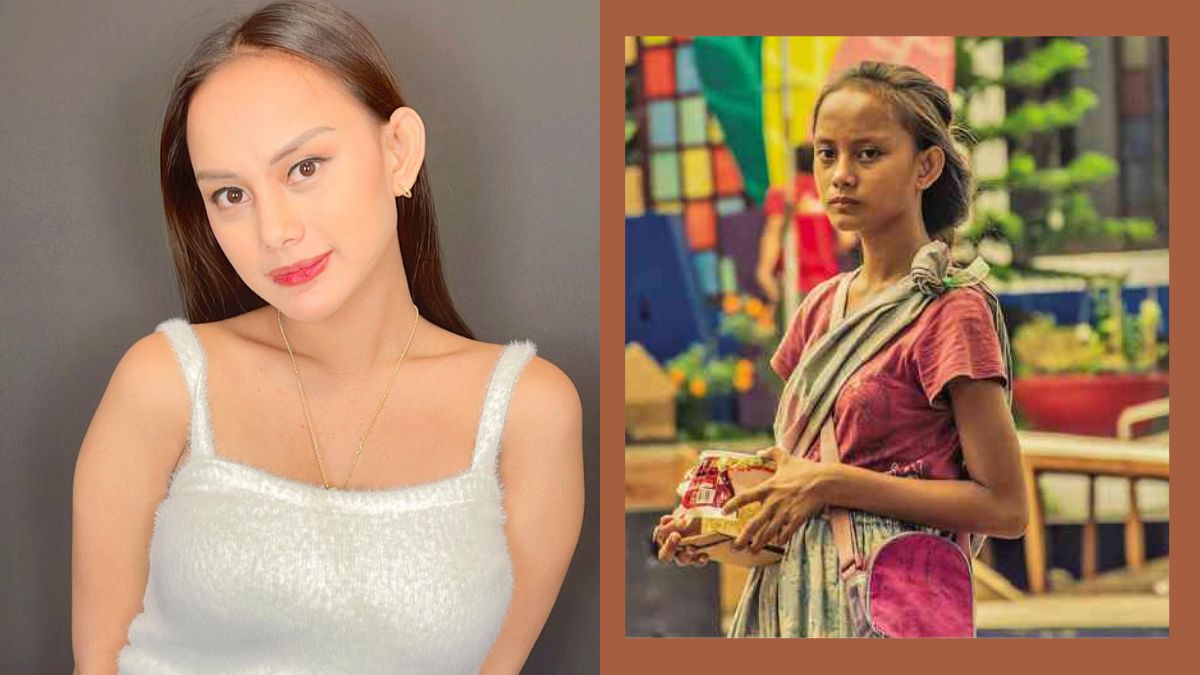From Poverty to Pageantry: How Badjao Girl Rita Gaviola Rose to Become the Queen of the Philippines
Manila, Philippines —
In the heart of Lucena City, Quezon Province, a barefoot girl once walked the streets with a woven basket in hand, begging for coins not for herself, but for her family. That girl was Rita Gaviola, known to many as the “Badjao Girl”, a name once tied to poverty, but now — to triumph, beauty, and transformation.
Rita’s story is no ordinary tale of rise to fame. It is a deeply moving reminder that no matter where you come from, your destiny is never written in stone.

A Life of Struggle
Rita Gaviola was born into the Badjao tribe, one of the most marginalized indigenous groups in the Philippines. Known as “sea gypsies,” the Badjao people often live in coastal areas and face extreme economic hardships. Rita’s childhood was shaped by survival — waking up each day unsure if they’d have food on the table.
Her parents, unable to find stable work, depended on alms and small-scale fishing to feed their six children. Rita, even as a young girl, understood the weight of her family’s situation. She would roam the streets barefoot, asking for coins or leftover food. With her striking features — sun-kissed skin, high cheekbones, and intense eyes — many would remember her, but few knew her name.
That would all change with a single photograph.
The Photo That Changed Everything
In 2016, during the Pahiyas Festival in Lucban, Quezon, a local photographer captured a candid photo of Rita begging in the streets. The image, haunting yet beautiful, quickly went viral on social media. Netizens were captivated by her raw, natural beauty. They called her “Badjao Girl”, and overnight, she became a symbol of indigenous elegance and quiet resilience.
The image wasn’t just shared — it was celebrated. Talent scouts, journalists, and pageant enthusiasts began asking: “Who is she?” For the first time, Rita was not invisible.
From Streets to Stage: The First Big Break
Soon after the photo went viral, Rita was invited to appear on television. She made her first public appearances on ABS-CBN programs, where people heard her speak — shy, soft-spoken, but determined. She expressed a dream that surprised many:
“I want to be a teacher… and maybe a beauty queen.”
That dream came closer to reality when she was chosen to be a housemate on Pinoy Big Brother: Lucky Season 7. Though she didn’t win the title, her appearance marked a turning point. The public fell in love with her authenticity — her lack of pretense, her humility, and her undeniable beauty.
Her fanbase grew. So did her confidence.
Facing Prejudice and Proving Them Wrong
But fame came with a price. As a Badjao, Rita faced harsh criticism and online bullying. Some netizens called her “dirty,” others questioned her worthiness of being in the limelight. “She’s just a beggar,” one cruel comment read.
But Rita stood tall. In interviews, she addressed the discrimination head-on, using her platform to raise awareness about the struggles of indigenous communities.
“Being Badjao is not something to be ashamed of. I am proud of who I am,” she once said in a viral interview.
She began to speak more boldly about education, poverty, and respect for indigenous people — slowly transforming from a viral face to a voice for the unheard.

The Crown That Sealed Her Fate
In 2022, Rita shocked the pageant world by joining and winning a provincial beauty pageant — the first major title in her career. Her poise, grace, and eloquence silenced the critics who once doubted her. The once-barefoot girl from the streets now stood in heels and a crown, representing not only herself but an entire community.
Soon, she started appearing on magazine covers, endorsements, and cultural events, all while proudly wearing her traditional Badjao garb.
But for Rita, it wasn’t just about beauty. It was about breaking barriers, and she did just that.
Beyond Beauty: Rita’s Mission
Despite her growing fame, Rita has remained deeply connected to her roots. She uses her platform to support indigenous education and often returns to her hometown to speak with children, encouraging them to stay in school and never give up.
In interviews, she shares that her ultimate dream is to build a school for Badjao children, where they can learn without fear of discrimination.
“I don’t want other kids to feel what I felt — that their dreams don’t matter because they are poor or different.”
She has also collaborated with non-profits that help empower young girls from tribal communities.
What Makes Rita Gaviola Different
There are many beauty queens in the Philippines, but few have had the kind of impact Rita Gaviola has. Her story resonates because it’s raw, real, and rare. She didn’t have stylists or managers growing up — only hope, grit, and grace.
Her transformation didn’t come from fame alone — it came from self-belief, and that belief has inspired an entire generation of Filipinos who once thought their poverty was permanent.
![Rita Gaviola ITO na siya NGAYON!? ang Laki ng Pinagbago! [Badjao Girl]](https://i.ytimg.com/vi/h0mPskyyYJ0/maxresdefault.jpg)
Where She Is Now
As of 2025, Rita continues to pursue modeling, advocacy work, and education. She has been shortlisted to compete in international pageants and has hinted at writing a memoir.
She’s also been in talks to star in a biographical film, potentially playing herself — something no beauty queen in the country has done before.
From begging on the streets to gracing the red carpets, Rita walks with the same eyes that once stared into cameras in hunger — only now, they burn with purpose.
Final Thoughts: A Queen in Every Sense
Rita Gaviola’s journey from a poor Badjao girl to one of the most inspiring beauty queens in the Philippines is more than a rags-to-riches tale — it’s a story of identity, courage, and purpose.
She didn’t just change her life.
She changed the narrative.
From the shadows of poverty to the spotlight of national pride, Rita Gaviola is proof that true royalty is not born — it is forged in fire.






